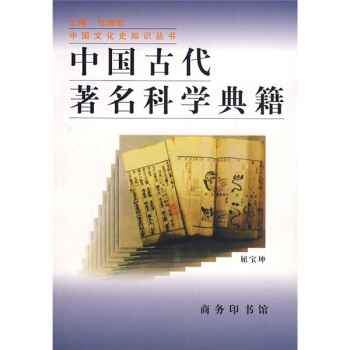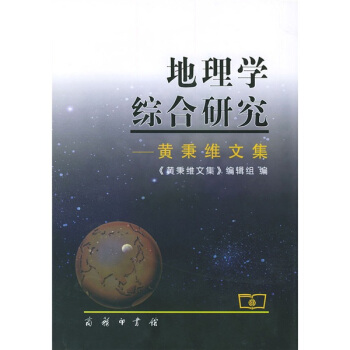![磁性理论 [THE THEORY OF MAGNETISM MADE SIMPLE]](https://pic.windowsfront.com/10175894/5d3a28dc-cf7b-41cb-a472-43c7d894c9a0.jpg)

具体描述
内容简介
《磁性理论》共分9个章节,主要对磁性理论的相关知识点作了介绍,具体内容包括History of Magnetism、Quantum Theory of Angular Momentum、Magnetism and the Many-Body Problem等。《磁性理论》可供各大专院校作为教材使用,也可供从事相关工作的人员作为参考用书使用。目录
PrologueChapter 1. History of Magnetism
1.1. Physics and Metaphysics
1.2. Gilbert and Descartes
1.3. Rise of Modern Science
1.4. Electrodynamics
1.5. The Electron
1.6. The Demise of Classical Physics
1.7. Quantum Theoiy
1.8. Modern Foundations
1.9. Magnetic Bubbles
1.10. Ultimate Thin Films
1.11. Dilute Magnetic Alloys
1.12. New Directions
Chapter 2. Currents or Spins?
2.1. Charge Currents or Spins?
2.2. The Magnetic Dipole
2.3. The Magnetic Dipole-Dipole Interactions
2.4. The Exchange Interactions
2.5. Metals and Their Alloys
2.6. Superconductivity
2.7. The Need to Study Spin Angular Momentum
Chapter 3. Quantum Theory of Angular Momentum
3.1. Kinetic Angular Momentum
3.2. Spherical Harmonics
3.3. Reason for Integer l and m
3.4. Matrices cf Angular Momentum
3.5. Pauli Spin Matrices
3.6. Compounding Angular Momentum
3.7. Equations of Motion of Interacting Angular Momenta
3.8. Coupled Bosch Representation
3.9. Rotations
3.10. More on Compound Angular Momentum
3.11. Other Representations
3.12. Spins One-Half: Special Tricks
3.13. Spins One
3.14. Quadratic Forms
3.15. Projection Operators
chapter 4. Magnetism and the Many-Body Problem
4.1. Hamiltonian Physics and Degeneracy
4.2. The Pauli Principle
4.3. The Two-Fermion Problem
4.4. Electrons in One Dimension: A Theorem
4.5. The Wronskian
4.6. States cf Three Electrons
4.7. Eigenfunctions cf Total S2 and Sz
4.8. Hunds Rules
4.9. p3 Configuration
4.10. p2 and p4 Configurations
4.11. Second Quantization
4.12. Double Exchange
4.13. Superexchange
4.14. Jellium
4.15. Hubbard Model: An Introduction
4.16. Nagaokas Ferromagnetism
4.17. One Dimension: Exact Solutions
4.18. Ferrimagnetism
4.19. Spin-Dependent Tunneling
Chapter 5. From Magnons to Solitons: Spin Dynamics
5.1. Spin Waves as Harmonic Oscillators
5.2. One-Magnon Eigenstates in Ferromagnets
5.3. Two-Magnon States and Eigenstates in Ferromagnets
5.4. Bound States in One Dimension
5.5. Bound States in Two and Three Dimensions
5.6. Antiferromagnetic Magnons: The One-Dimensional XY Model
5.7. Bethes Solution of One-Dimensional Heisenberg Antiferromagnet
5.8. Linearized Antiferromagnetic Magnons
5.9. Ferrimagnetism
5.10. Some Rigorous Notions in Antiferro- and Ferri-Magnetism
5.11. Vortices
5.12. Solitons and Bloch Domain Walls: Introductory Material
5.13. Solitary Wave Solution
5.14. More on Magnetic Domains
5.15. Time-Dependent Phenomena
5.16. Majumdar-Ghosh Model and "Quantum Frustration"
5.17. Integer Spins
5.18. The AKLT Spin One Chain
5.19. Defective Antiferromagnets
Chapter 6. Magnetism in Metals
6.1. Bloch and Wannier States
6.2. Tight-Binding
6.3. Weak Magnetic Properties
6.4. Exchange in Solids: Construction of a Model Hamiltonian
6.5. Perturbation-Theoretic Derivation of Heisenberg Hamiltonian
6.6. Heisenberg Hamiltonian in Metals
6.7. Ordered Magnetic Metals: Deriving the Ground State
6.8. Kondo Effect
6.9. Spin Glasses
6.10. Magnetism without Localized Spins: Preliminaries
6.11. Degenerate Bands and Intra-Atomic Exchange Forces
6.12. Magnons in Metals
6.13. Marginal Magnetism of Impurities
6.14. Correlations and Equivalence to s-d Model
6.15. Periodic Anderson Model
chapter 7. Statistical Thermodynamics
7.1. Spins in a Magnetic Field
7.2. The Partition Function
7.3. The Concept of the Molecular Field
7.4. Discontinuity in Specific Heat
7.5. Magnetic Susceptibility and Spontaneous Magnetization
7.6. Adiabatic Demagnetization
7.7. Anti ferromagnetism
7.8. Short-Ranged versus Long-Ranged Interactions
7.9. Fermions, Bosons, and all that
Fermions
nosons
Gaussian
Legendre Transformations
7.10. Gaussian and Spherical Models
Gaussian Model
Spherical Model
Watsons Integrals Generalized
7.11. Magnetic Susceptibility in Gaussian and Spherical Models
7.12. Spherical Antiferromagnet
7.13. Spherical Model Spin Glass
Magnetic Properties of Spin Glass
7.14. Thermodynamics of Magnons
7.15. Magnetism in Two Dimensions
7.16. The XY Model: 1D
7.17. The XY Model: 2D
7.18. Transfer Matrix of Plane Rotator Model
Chapter 8. The Ising Model
8.1. High Temperature Expansions
8.2. Graph Theory
8.3. Low Temperature Expansions and the Duality Relations
8.4. Peierls Proof of Long Range Order
8.5. 1D Ising Model in Longitudinal Fields
8.6. 1D Ising Model in Transverse Fields
8.7. ConcerningQuadratic Forms of Fermion Operators
8.8. Two-Dimensional Ising Model: The Transfer Matrix
8.9. Solution of Two-Dimensional Ising Model in Zero Field
8.10. Spontaneous Magnetization and Magnetic Susceptibility
8.11. Zeros of the Partition Function
8.12. Miscellania, Including 2D Antiferromagnets
8.13. The Three-Dimensional Ising Model
8.14. Ising Gauge Glass
8.15. Frustration
Chapter 9. Miscellaneous Advanced Topics
9.1. Critical Phenomena
9.2. Green Functions Formalism
9.3. Nonlinear Responses and Chaos
9.4. Kondo Phenomenon: The s-d Model Redux
9.5. Scaling, Renormalization and Information Theory
Bibliography
Index
前言/序言
用户评价
拿到《磁性理论 [THE THEORY OF MAGNETISM MADE SIMPLE]》这本书,我的心情是既兴奋又忐忑。兴奋是因为,我长久以来都对磁性现象感到着迷,从孩童时期用磁铁玩耍,到后来看到科幻电影里各种依赖磁力的先进技术,我总觉得磁性背后蕴藏着无穷的奥秘。但忐忑的是,我知道任何一门科学理论,尤其是物理学中的理论,一旦深入下去,往往都伴随着复杂的数学公式和抽象的物理概念,这让我这个文科生感到望而却步。我曾多次尝试阅读一些关于磁性的书籍,但每一次都以失败告终。要么是因为内容过于专业,充斥着我无法理解的符号和公式,读了几页就彻底放弃;要么就是过于碎片化,虽然讲了一些有趣的磁性现象,但却无法构建起一个完整的理论体系,让我感觉像是零散的知识点堆砌。我非常希望这本书能够打破这种困境,它承诺的“简单化”让我看到了希望。我期待这本书能够用一种非常直观、形象的方式来解释磁性的本质,比如利用一些生活中的类比,或者生动的图解,让我能够真正理解,而不是仅仅停留在“知道有这么回事”的层面。我希望读完这本书,我能对磁力、磁场以及各种磁性材料有一个清晰的认识,并且能够用自己的语言描述出一些基本的磁性原理。
评分《磁性理论 [THE THEORY OF MAGNETISM MADE SIMPLE]》这本书,我最近才拿到手,说实话,对于我这种非专业人士来说,这本书的书名就已经够吸引人的了。“简单化”这三个字,仿佛黑暗中的一束光,点燃了我对这个神秘领域的好奇心。我一直觉得磁性是一种非常神奇的现象,从指南针的指引到冰箱上的小贴纸,再到我们现代生活中无处不在的电动机和发电机,都离不开它。但是,一旦深入了解,就会发现它的背后隐藏着复杂的物理原理,什么磁畴、磁矩、磁场强度、磁导率……这些概念光是听着就让人头大。我曾试图通过一些科普视频或者入门书籍来理解,但很多时候,它们要么过于浅显,让我觉得“这不就是我知道的吗?”,要么又跳跃性太强,一下子就进入了我无法理解的数学模型和公式。所以我一直期待着一本能够真正站在读者的角度,一步一步引导我,让我能够“看懂”磁性理论的书。这本书的封面设计也很简洁大气,没有太多花哨的装饰,给人一种专业而沉静的感觉,这让我对接下来的阅读充满了期待。我希望这本书能够真正做到“简单”,让我能够建立起对磁性现象一个清晰、扎实的理解,而不仅仅是停留在感性认识的层面。
评分我拿到《磁性理论 [THE THEORY OF MAGNETISM MADE SIMPLE]》这本书已经有一段时间了,至今我还没有真正开始阅读。原因很简单,我一直对磁学知识感到一种莫名的畏惧,总觉得它是一个极其抽象且难以掌握的领域。我记得我中学时学习物理,关于磁场的讲解总是伴随着大量的公式和抽象的矢量图,每次考试前都要为此头疼不已,最终也只能是死记硬背一些结论,而对其中的内在逻辑却知之甚少。这导致了我对磁性现象一直有一种“隔靴搔痒”的感觉,知道它存在,知道它有力量,但却无法触及到它真正的核心。我曾经尝试过一些号称“通俗易懂”的磁性科普读物,但读完之后,我发现自己似乎对磁性有了更多的疑问,而不是解答。那些书要么过于追求“趣味性”,把复杂的概念包装成一个个小故事,导致了信息失真;要么就是直接抛出一些高深的理论,让我感觉像是看天书一样。所以,当我在书店看到这本书时,它的副标题“理论简单化”立刻吸引了我。我希望这本书能够真正实现它的承诺,用一种循序渐进、易于理解的方式,把我从一个对磁性一窍不通的门外汉,变成一个能够对其基本原理有所了解的普通读者。我期待它能够颠覆我对磁性理论枯燥、晦涩的刻板印象。
评分说实话,我还没来得及翻开《磁性理论 [THE THEORY OF MAGNETISM MADE SIMPLE]》这本书的封面。但光是看到它,我就已经对它充满了好奇和一丝丝的期待。我的工作与材料科学有一些边缘性的接触,在日常工作中,时常会遇到一些需要考虑材料磁性的场合,比如选择合适的磁屏蔽材料,或者评估某种合金的磁特性。然而,每当需要深入了解时,我都会发现自己在这方面的知识储备非常有限。我不是物理学专业的出身,对电磁学的基础理论掌握得也比较薄弱。我尝试过搜索相关的技术文档,但那些术语和公式对我来说就像是外星语一样,根本无法理解。我曾经设想过,如果能有一本书,能够从最基础的概念讲起,一步一步地把我带入磁性理论的世界,那该多好啊!不需要多么高深的数学推导,只需要让我明白“为什么会这样”,而不是仅仅知道“结果是什么”。我希望这本书能够填补我在这方面的知识空白,让我能够更自信地处理工作中遇到的与磁性相关的问题。这本书是否能够达到我期望的“简单化”的效果,我还需要亲自去验证,但它的出现,至少给了我一个努力的方向和一份希望。
评分《磁性理论 [THE THEORY OF MAGNETISM MADE SIMPLE]》这本书,我还没有开始阅读,但我已经对其产生了浓厚的兴趣。我是一名普通的爱好者,对科学充满好奇,尤其对那些看似神秘又无处不在的现象。磁性就是其中之一。我曾经看过很多关于磁性的纪录片,也听过一些关于磁浮列车的介绍,这些都让我觉得磁性是一种非常强大的力量,但具体它是如何运作的,我却知之甚少。我试过搜索一些基础的物理知识,但很多时候,解释都显得过于专业,或者太过于简化,无法满足我想要深入了解的愿望。我总觉得,如果能够有一本书,能够以一种清晰、有条理的方式,从最根本的原理讲起,一步步地揭示磁性的奥秘,那将是多么幸运的事情。我希望这本书能够做到这一点,它“简单化”的承诺让我觉得它很有可能做到。我期待它能够用通俗易懂的语言,结合一些有趣的例子,让我能够理解原子层面的磁性是如何产生的,以及宏观的磁场是如何形成的。我希望这本书能够让我不再对磁性感到神秘莫测,而是能够真正地理解它,甚至能够对一些与磁性相关的技术原理产生一些初步的认识。
评分适合工作后翻翻
评分应该不错,但是时间紧,精力不够
评分翻到Ising模型的章节,对自己帮助挺大的。推荐书友翻看哈。
评分应该不错,但是时间紧,精力不够
评分适合工作后翻翻
评分应该不错,但是时间紧,精力不够
评分呵呵,不错哈。
评分应该不错,但是时间紧,精力不够
评分呵呵,不错哈。
相关图书
本站所有内容均为互联网搜索引擎提供的公开搜索信息,本站不存储任何数据与内容,任何内容与数据均与本站无关,如有需要请联系相关搜索引擎包括但不限于百度,google,bing,sogou 等
© 2025 book.coffeedeals.club All Rights Reserved. 静流书站 版权所有

![欧氏空间上的勒贝格积分(修订版)(英文版) [Lebesgue Integration on Euclidean Space Revised Edition] pdf epub mobi 电子书 下载](https://pic.windowsfront.com/10184606/09f2a576-82ee-4fb5-adf2-f8e2aba380a7.jpg)


















